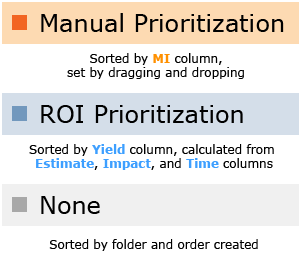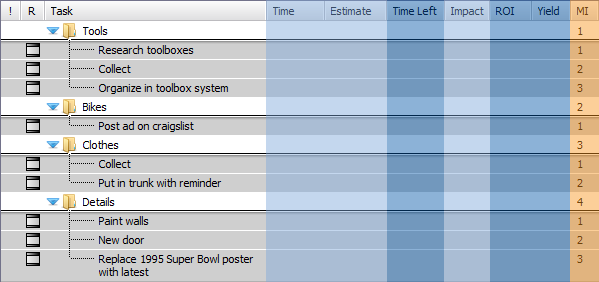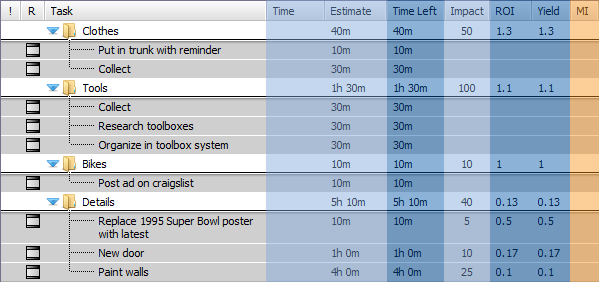Watership Planner uses three different prioritization methods, each designed for different levels of project complexity. Each task can only be sorted by one prioritization method at a time, but you can mix different prioritization methods within the same project.

Figure 1. A task is sorted based on the information it has associated with it. Higher methods in this chart override lower methods, so a task with Manual prioritization will always be higher in the list than a task ROI prioritization and so on.
The columns that have been colored are those that are associated with the different prioritization methods.
No prioritization, tasks are sorted based on what folder they are in and in the order they were created.

Figure 2. Unsorted project task list.
Chained prioritization, like a stack of papers arranged in order, most important on top. This is the prioritization method used for the Today Task List. This works easiest when you have a task list of about 10 to 20 items and they need to be done in a strict order.

Figure 3. Manually prioritized project task list. Done by dragging and dropping items into the desired order.
Impact based prioritization, designed for long lists of tasks where not everything will be accomplished. This is the easiest way of dealing with long lists containing hundreds of tasks. The order is updated automatically based on your latest estimates and impact.

Figure 4. ROI prioritized project task list. Done by filling in Estimate and Impact columns.